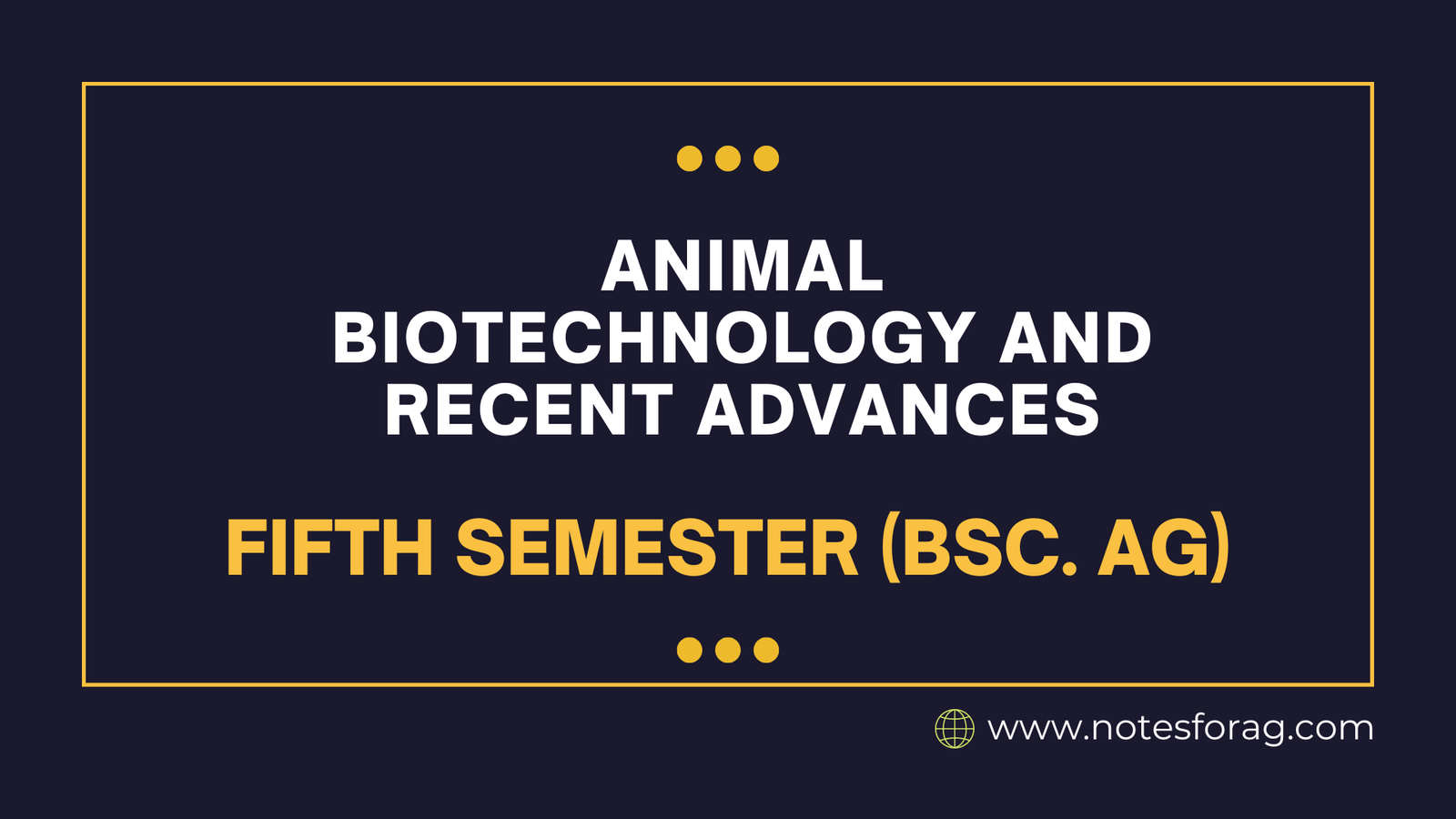Animal biotechnology uses genetic engineering, cloning, and other biotechnological technologies to improve cattle health and manufacture medications. Recent developments, such as CRISPR-Cas9 gene editing, have allowed for the development of disease-resistant animals and faster-growing species, such as AquAdvantage salmon. Transgenic animals are being used to generate therapeutic proteins, while stem cell research is advancing cultured meat production and veterinary medicines. These advances are intended to increase food security, sustainability, and animal welfare, but they also present ethical and regulatory issues.
Table of Contents
Introduction to Animal Biotechnology
Animal biotechnology is the use of scientific techniques and equipment to modify live organisms for specific objectives, particularly in agriculture and veterinary research. This field of biotechnology includes a wide range of techniques, such as genetic engineering, cloning, and the use of stem cells. These biotechnology advancements have resulted in major gains in animal health, production, and agricultural sustainability.

Animal biotechnology’s fundamental goal is to improve the genetic features of livestock and companion animals, allowing for faster growth rates, greater disease resistance, and better reproductive efficiency. For example, scientists can use genetic engineering to add beneficial genes into animal genomes, resulting in more disease-resistant cattle and reducing reliance on traditional veterinarian interventions. Another important approach is cloning, which allows for the reproduction of animals with desired qualities, ensuring that these positive characteristics persist throughout herds or populations.
Recent Advances in Animal Biotechnology
1. Genetic Engineering and CRISPR-Cas9:
- CRISPR/Cas9 Gene Editing: CRISPR is transforming animal biotechnology by allowing for precise gene editing. It has been used to modify cattle characteristics like as disease resistance, growth rate, and muscle mass. For example:
- Pigs resistant to PRRS: CRISPR has been used to develop pigs immune to Porcine Reproductive and Respiratory Syndrome (PRRS), a common disease in pig husbandry.
- Dairy cows without horns: Gene editing has been used to eliminate the genes responsible for horn development in dairy cows, removing the necessity for dehorning.
- Gene Driven Technology: This enables for the rapid transmission of a certain genetic feature throughout a population, which is being studied for use in the control of invasive species or the reduction of disease vector populations such as mosquitos.
2. Transgenic Animals
- Pharming: Transgenic animals have been designed to produce human proteins and medicines. For example:
- Goats produce spider silk proteins: Genetically modified goats have been engineered to produce spider silk proteins in their milk, which are employed in biomedical applications and engineering.
- Transgenic cows to produce therapeutic proteins: These animals generate human antibodies and proteins, which are employed in treatments for cancer and uncommon genetic disorders.
- AquAdvantage salmon: This is a genetically engineered Atlantic salmon that grows twice as quickly as non-GMO salmon, helping to meet rising fish demand while decreasing environmental burden on wild fish supplies.
3. Cloning
- Livestock Cloning: Cloning livestock has been achieved through techniques such as somatic cell nuclear transfer (SCNT), ensuring that genetically superior animals can be duplicated for commercial farming.
- Endangered Species Conservation: Cloning technologies are being investigated and exploited to save endangered animals, like the black-footed ferret and Przewalski’s horse.
4. Animal Stem Cells and Cultured Meat
- Cultured meat: Stem cell technology is being utilized to manufacture meat in laboratories without murdering animals. This technology has the ability to transform food production and address ethical problems surrounding meat eating.
- Recent developments: Memphis Meats and Aleph Farms are pioneering this sector by producing lab-grown beef, chicken, and fish. Cultured meat lowers the environmental impact of traditional farming.
- Stem Cells and Veterinary Medicine: Animal stem cells are being used to treat injuries in horses, dogs, and cats, particularly orthopedic diseases such as tendon and joint injury.
5. Animal Health and Vaccines
- RNA-Based Vaccines: Following the success of mRNA vaccines in people (such as COVID-19 vaccinations), this technology is being adopted for animals. For example, mRNA vaccines are being developed to protect livestock and pets against viral infections.
- Disease-resistant animals: Biotechnology is aimed at developing animals that are resistant to various diseases, hence reducing the need for drugs and enhancing overall animal welfare.
6. Microbiome Research
- Manipulating gut microbiota: Research on livestock microbiomes is leading to advances in changing their gut microbes for better digestion, increased growth rates, and lower methane emissions, all of which help to sustainability.
- Probiotics and prebiotics: Tailored probiotics are being created to improve livestock health by encouraging healthy gut bacteria, increasing feed efficiency, and lowering sickness.
7. Sustainability and Environmental Biotechnology
- Low-Emission Livestock: Gene editing and microbiome manipulation are being utilized to create animals that emit less greenhouse gas, particularly cattle and sheep. This helps to reduce the impact of cattle on climate change.
- Biodegradable Animal Products: Research into biodegradable materials derived from animal wastes (such as wool and collagen) is assisting in waste reduction and the development of sustainable products.
These recent developments in animal biotechnology are driving innovation in a variety of industries, with the potential to improve food security, animal health, and environmental sustainability, while also creating new concerns that must be properly managed.
Frequently Asked Questions
What is animal biotechnology?
Animal biotechnology is the application of scientific techniques, such as genetic engineering, cloning, and molecular biology, to improve animal health, production, and efficiency. It also includes employing animals to manufacture useful things like medications and vaccines.
What are the recent advances in animal biotechnology?
Some key recent advances include: CRISPR-Cas9 Gene Editing, Transgenic Animals, Cultured Meat, RNA-based Vaccines and Low-emission Livestock.
Related Articles

